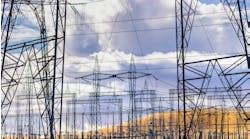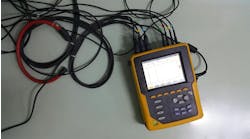Protecting wiring systems and electrical equipment from damaging transient overvoltages is critical to reducing unwanted downtime and unplanned repair costs. It is important to design a surge protective scheme that covers all levels of the electrical infrastructure downstream of the electric utility revenue meter. Previously, these devices were known as transient voltage surge suppressors (TVSSs). They are now known as surge protective devices (SPDs). Underwriters Laboratories (UL) Standard 1449 details the requirements for SPD design and construction.
SPDs work by using a semiconductor material in the form of a metal oxide varistor (MOV). The MOV is designed to prohibit voltage conduction at nominal voltage. When the break-through voltage is reached during a transient overvoltage event, the MOV changes from an insulator to a conductor. It then begins to conduct and provide a low impedance path for surge current to the grounding system.
Electric utilities install lightning arresters on their distribution system to help absorb some of the transient overvoltages and protect the distribution system components from critical failure. However, this is not enough to protect a facility from high energy impulses.
A single SPD plug strip is often thought of as adequate protection for equipment. However, the energy level of the transient overvoltage may be greater than what the device can protect. The layered approach is the best approach to protect an entire facility from damaging impulsive transient overvoltages. Layering is accomplished by installing properly sized SPDs at multiple locations (e.g., main service, panelboards, and equipment levels). The NEMA Surge Institute does a good job of explaining the different types of SPDs available for each level of the facility:
“Per the National Electrical Code (NEC) and ANSI/UL 1449, SPDs are designated as follows:
“Type 1: Permanently connected, intended for installation between the secondary of the service transformer and the line side of the service disconnect overcurrent device (service equipment). Their main purpose is to protect insulation levels of the electrical system against external surges caused by lightning or utility capacitor bank switching.
“Type 2: Permanently connected, intended for installation on the load side of the service disconnect overcurrent device (service equipment), including brand panel locations. Their main purpose is to protect the sensitive electronics and microprocessor based loads against residual lightning energy, motor generated surges and other internally generated surge events.
“Type 3: Point-of-utilization SPDs installed at a minimum conductor length of 10 m (30 ft) from the electrical service panel to the point-of-utilization. Examples include cord connected, direct plug-in and receptacle type SPDs.”
The proper installation of the SPD is critical to achieving the designed operating parameters. When installing SPDs that require the conductor to be run from a panel to the device, keep the length as short as possible. Never install more than 3 ft of conductor. Ideally, by twisting the conductors and not exceeding more than 1 ft, a 75% reduction in let-through voltage can be achieved. Remember, the facility's bonding and grounding system must be installed to the minimum requirements of the NEC. More robust engineering measures may be required for higher lightning-prone areas. Finally, always ensure that the SPD you have selected is compliant to the most current version of UL 1449.



